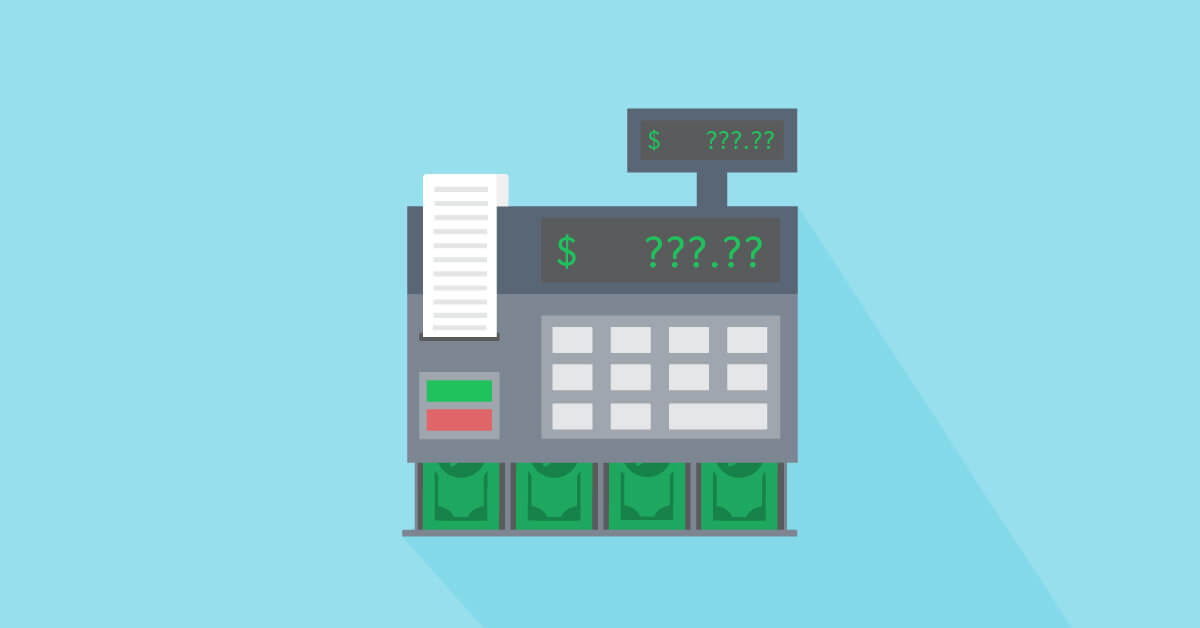Determining the right law firm pricing—balancing what’s best for your firm and for your clients—is one of the most important aspects of running a legal practice. It affects how your clients see the value they get from your services, and whether they’ll hire you at all.
Still, for many law firms, effective legal pricing remains a challenge. Many firms struggle with questions like:
- How much should lawyers charge?
- How do you know if your prices are too high, or too low?
- What is the average cost of a lawyer?
- What is the best pricing model for your firm?
- Should you charge for an initial consultation, or not?
We’ll answer these questions and more in this complete guide to law firm pricing. You’ll learn everything you need to know about pricing legal services, including average attorney rates, how rates are calculated, legal pricing strategies, and how smart pricing can win you more clients.
What is the average cost of a lawyer?
When it comes to law firm pricing, understanding average attorney rates is key. You’ll need to consider how much a lawyer costs per hour and how your law firm fees compare to your peers.
While market rates aren’t the be-all and end-all factors you should use to determine your law firm pricing strategies, they can provide valuable insights and serve as useful benchmarks. It’s a good idea to know how your rates compare to average lawyer fees per hour in your area.
Every year, the Legal Trends Report looks at aggregated and anonymized data from tens of thousands of lawyers to determine average attorney fees by state.
Here’s a look at the average lawyer’s cost per hour by state and practice area, according to the 2022 report:
State |
Average Lawyer Hourly Rate 2022 |
Average Lawyer Hourly Rate 2021 |
| Alabama | $211 | $206 |
| Arkansas | $248 | $251 |
| Arizona | $268 | $260 |
| California | $358 | $352 |
| Colorado | $271 | $267 |
| Connecticut | $350 | $335 |
| District of Columbia | $424 | $411 |
| Delaware | $358 | $353 |
| Florida | $303 | $296 |
| Georgia | $288 | $275 |
| Iowa | $192 | $189 |
| Idaho | $235 | $227 |
| Illinois | $314 | $309 |
| Indiana | $251 | $239 |
| Kansas | $248 | $237 |
| Kentucky | $216 | $214 |
| Louisiana | $250 | $244 |
| Massachusetts | $290 | $285 |
| Maryland | $319 | $312 |
| Maine | $195 | $178 |
| Michigan | $269 | $272 |
| Minnesota | $274 | $275 |
| Missouri | $254 | $246 |
| Mississippi | $225 | $214 |
| Montana | $213 | $207 |
| North Carolina | $262 | $255 |
| North Dakota | $268 | $264 |
| Nebraska | $219 | $224 |
| New Hampshire | $256 | $239 |
| New Jersey | $330 | $324 |
| New Mexico | $244 | $243 |
| Nevada | $318 | $320 |
| New York | $378 | $372 |
| Ohio | $238 | $234 |
| Oklahoma | $230 | $225 |
| Oregon | $263 | $257 |
| Pennsylvania | $290 | $287 |
| Rhode Island | $238 | $221 |
| South Carolina | $259 | $246 |
| South Dakota | $189 | $183 |
| Tennessee | $247 | $235 |
| Texas | $313 | $301 |
| Utah | $260 | $251 |
| Virginia | $304 | $295 |
| Vermont | $235 | $224 |
| Washington | $296 | $286 |
| Wisconsin | $251 | $248 |
| West Virginia | $168 | $163 |
| Wyoming | $266 | $257 |
- The average hourly billing rate across the country was $251 per hour.
- The highest average hourly billing rate by state was $372 per hour in New York.
- The lowest average hourly billing rate by state was $163 per hour in West Virginia.
- The highest average hourly billing rate by practice area was a tie between bankruptcy law and intellectual property law at $362 per hour.
- The lowest average hourly billing rate by practice area was for juvenile law at $91 per hour.
The report also looks at the average cost of a lawyer by state adjusted for cost of living. These are lawyer hourly rates, but this isn’t the only way to charge for legal services. As we’ll discuss later in this guide, you can also charge flat fees, contingency fees, or use another law firm pricing model.
To benchmark your rates and business performance against other lawyers in your state and practice areas, be sure to read our interactive resource, How Much Should I Charge as a Lawyer?
How do lawyers price their services?
There are many valid approaches to legal pricing. In general, rates must be profitable for the firm after costs to provide legal services for the client. You’ll also want to ensure the price is fair and the client feels they are receiving adequate value for the price being paid.
Indeed, Rule 1.5 of the ABA Model Rules of Professional Conduct states that a lawyer may not collect an “unreasonable fee” or an “unreasonable amount for expenses.” So, it’s important to make sure that your legal pricing makes sense both from a business perspective and for your client.
Regardless of what strategy or law firm pricing model you use, ultimately, you should price your legal services based on a balance of factors such as:
- The cost of providing legal services for your firm and in your jurisdiction
- The value you provide to your clients, including your level of experience as a lawyer
- The type of legal services you provide in a particular practice area
- The time and effort required
- The type and complexity of the particular case
- Any incentives or discounts
- What makes the most sense for your clients
How you set your law firm fees depends on how you charge clients as well.
For example, if you charge an hourly rate, you may want to work back from your desired income per year, the number of cases you can reasonably take on in a year, the time and effort required for each case, and so on.
If you charge a flat fee, you may look more closely at what it will reasonably cost your law firm to provide a given flat-fee service, and whether you can charge a flat rate that is palatable to your target clients and also profitable for your firm based on this cost.
You may like these posts
How to calculate the cost of legal services

Setting the right legal rates is crucial for your firm’s budget and business plan. The right pricing will yield a profitable, sustainable firm, while the wrong pricing could put your firm out of business in short order.
To calculate your legal fees, prioritize the value you provide to the client above all else. If a client doesn’t feel your rate is reasonable, they’ll be unhappy with your services, leading to fewer referrals, fewer reviews, and a decline in overall business.
At the same time, if you’re not charging based on the value of the experience your client is receiving, you could be leaving money on the table.
After all, as Jack Newton explains in The Client-Centered Law Firm, your “product” as a law firm is both your legal deliverable and the experience you provide.
To set an appropriate price for your legal services, determine the true value you deliver. Spend time talking to clients about what they value most about working with you and why.
You’ll also want to consider:
- Your desired income
- Business expenses (taxes, malpractice insurance, rent, etc.)—learn more about law practice expenses
- How much you’ll work in a year, accounting for vacation, sick time, etc.
- Market rates
- Your law firm budget
If you don’t yet have a budget or a business plan, follow these steps to writing a budget and this checklist for coming up with a business plan to make sure those
| Tip:To see how your law firm prices compare to the average attorney hourly rate in your area, plug your state, practice area, and hourly rate into our Legal Rate Benchmark Calculator. You’ll get a quick look at how your legal pricing compares to your peers. |
Law firm pricing models

So, how do lawyers price their services? There are several broad-based law firm pricing strategies that may guide how typical lawyer fees are set:
- Cost-first models focus on the attorney costs required by the firm to provide legal services. These models prioritize making sure costs are recouped and that there is a margin of profitability.
- Competition-first models focus on providing better prices than the competition (lower rates, better value for the price, etc.).
- Value-first models aim to price legal services based on the value being provided to the client.
We recommend using a value-first model to determine your attorney hourly rate. This approach ensures the best possible value for clients, which impacts reviews, referrals, and more new business. Plus, a value-first model ensures you’re charging what you’re worth—based on the value of your services, above any other factor.
Better yet, we also recommend using a value-first approach that doesn’t use hourly lawyer rates at all. Other models can provide more predictability—and more value—to your clients.
Let’s take a look at different legal service pricing approaches:
Hourly pricing
Hourly pricing is when you charge a set rate for all the time you spend working on a case.
The traditional way to charge for legal services, hourly pricing, may make sense for unpredictable types of matters such as lengthy criminal cases or long, drawn-out litigations.
However, where the legal work at hand is more predictable, one of the alternative fee models that we discuss below may be more appropriate to reduce pricing risk for your clients—and in some cases ensure strong cash flow for your firm.
If you’re going to price your legal services by the hour, use the resources above (the Legal Trends Report, the Legal Rate Benchmark Calculator, etc.) to come up with a fair, value-based price for you and your clients that’s in line with market rates.
Flat fees
Flat fee pricing is when you charge one set fee, say $1,000, for a certain legal service. Charging flat fees for legal services may make sense if you’re offering legal services that are similar and predictable. For example, you may want to charge a flat fee for an immigration application, a no-fault divorce, or a will.
Flat-rate lawyers offer predictability that puts their clients at ease as they deal with their legal matter, because price becomes one less thing to worry about.
Contingency
Contingency pricing is when you charge a percentage of the client’s payout in their case, contingent on you obtaining a positive outcome in the case. This type of pricing is common in personal injury cases, for example.
Contingency pricing might make sense in situations where the client could not otherwise afford legal help, or where a contingency fee offers more predictability than hourly pricing for a lengthy case.
Retainer, or evergreen retainer
A retainer, or evergreen retainer, is more a form of billing than a form of pricing. It’s when a client pays a certain amount up-front into a trust account, and the lawyer sends invoices and pays themselves from that retainer as the case progresses.
The average lawyer retainer fee can range from a few thousand to a few hundred thousand dollars, depending on the size of the firm and the legal services being offered.
Sliding scale
Sliding scale pricing is when clients pay fees on a sliding scale based on their income, rather than a standard rate. This type of approach could be applied to hourly pricing or flat fees. This method of pricing could help your firm access more clients by making services more affordable.
Subscription pricing
Subscription law firm pricing is when you provide clients with legal services on an as-needed basis for a set monthly subscription fee. This leads to more predictable income for your firm, and smoother working relationships. Such a pricing model may make sense for clients who need ongoing legal help, such as small businesses.
Charging consultation fees

A potential client calls for a 30-minute consult. Should you charge a consultation fee, or not?
Charging for a consultation is a matter of value versus client expectations. If you work with consumers looking to find someone they feel comfortable with and to get an idea of how their legal issue may be handled in a hurry, a paid consultation could be the difference between clients working with you and moving on to the next lawyer they’ve found in their Google search.
But if your reputation precedes you, or if you work with corporate clients on larger projects, they might think it’s odd if you don’t charge an initial consultation fee.
You know your clients best. We recommend offering free consultations if you can, but only if this makes sense for your firm. If lots of clients come knocking, but few hire you, you may want to put a price on consults to manage tire-kickers—or you may want to take a look at the experience you’re providing and how it may be turning clients off.
If you’re going to charge a few hundred dollars for a consultation, we recommend setting a flat fee for a set period of time as another way to give clients price predictability and put their minds at ease.
Winning more clients with effective law firm pricing

For client-centered law firms, effective law firm pricing means pricing services from the clients’ point of view. But it also means the price needs to make sense for your firm.
Price your services too high, and you may cut yourself off from many potential clients, especially during economic downturns
At the same time, you need to know your value. Price your services too low, and your clients may question the value of what you’re truly offering.
The key is to set law firm fees that make sense and that your clients are willing to pay. By listening to your clients, communicating with them, and developing deep empathy for their needs, you can then set legal rates that put them at ease. Price predictability and a lack of sticker shock are part of the client experience, so in a way, good law firm pricing creates even more value for your clients. Displaying pricing on your law firm website is also helpful in this regard.
Final thoughts on law firm pricing
With the right client-centered law firm pricing, your clients will be happier, and your firm will be more profitable. Lawyer rates don’t have to be complicated: Do a bit of market research, take your expenses into account, and above all, be honest about what price makes the most sense to your client.
Read some of the resources from within this post (plus a few additional ones) to further help you with law firm pricing and finances:
- The Legal Trends Report
- How Much Should I Charge as a Lawyer?
- The Hourly Rate Benchmark Calculator
- The Ultimate Guide to Law Firm Billing
- How to Improve Law Firm Cash Flow
- Interview with T.C. Whittaker of PwC
We published this blog post in August 2020. Last updated: .
Categorized in: Business









